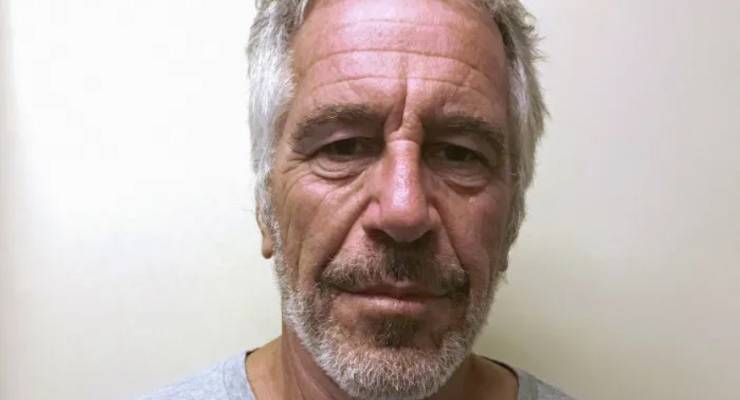
Note: this article discusses suicide and self harm.
While it is a temporary relief to his supporters, UK Judge Vanessa Baraitser’s rejection of US attempts to extradite the WikiLeaks founder Julian Assange does very little for the core principles of protecting whistleblowers and freedom of information.
Baraitser rejected almost all of the arguments put forward by Assange’s lawyers, dismissing their position that the charges of espionage are politically motivated, that the “right to truth” cited in UN resolutions had any legal weight, or that Assange would receive neither a fair trial nor first amendment protections if tried in the US.
Baraitser refused the extradition request on the basis that, given Assange’s mental condition, the prison system in the US simply couldn’t keep him safe.
“I find that Mr Assange’s risk of committing suicide, if an extradition order were to be made, to be substantial,” she said.
“Faced with conditions of near-total isolation … I am satisfied that the procedures [outlined by US witnesses] will not prevent Mr Assange from finding a way to commit suicide.”
Those procedures include “special administrative measures” (“SAMs”), conditions imposed on certain prisoners to “protect national security information”, which the judge found was likely to be applied in Assange’s case.
Witnesses for the defence described the conditions of other prisoner subject to “SAMs” thus:
Inmates were in solitary confinement, technically, for 24-hours per day. There was absolutely no communication, by any means, with other inmates. The only form of human interaction they encountered was when correctional officers opened the viewing slot during their inspection rounds of the unit, when institution staff walked through the unit during their required weekly rounds, or when meals were delivered through the secure meal slot in the door. One-hour recreation was offered to inmates in this unit each day; however, in my experience, often times an inmate would decline this opportunity because it was much of the same as their current situation. The recreation area, in the unit, consisted of a small barren indoor cell, absent any exercise equipment.
In her 132-page judgement Baraitser concluded that it did not seem possible
… to prevent suicide where a prisoner is determined to go through with this. Others have succeeded in recent years in committing suicide at [Federal] jails … As Professor [Michael] Kopelman stated, suicide protocols cannot prevent suicide, and, as [defence witness Maureen Baird] put it, “the suicide prevention strategy of the [Bureau of Prisons] is very good but it doesn’t always work”.
This raises the question — just how safe is the US prison system for someone with serious mental health issues? The answer: we really don’t know. The US prison system’s statistics around deaths in custody are hopelessly out of date, last published in 2016 and covering the period up to 2014.
But to the extent we know anything, it’s not good. According to an investigation by NBC Washington, there are about 300 suicide attempts in federal prisons each year, around a dozen of which are completed. This — again, according to the out of date figures — is a lower rate than state prisons and considerably lower than local jails where, in 2014, 50 out of every 100,000 prisoners died by suicide, a figure that was sharply rising.
Assange’s ally Chelsea Manning was hospitalised after an attempt at a federal jail in March 2020.
And, famously, billionaire paedophile Jeffrey Epstein took his life (under strange circumstances) at New York’s federal Metropolitan Correctional Center in August 2019.
The “serious irregularities” that surround Epstein’s death are apparently not uncommon in the US prison system according to David Fathi, director of the National Prison Project at the American Civil Liberties Union. He told NBC: “In most prisons and jails I’ve seen — and there are exceptions — suicide prevention is a joke.
We have seen people able to attempt suicide while supposedly on constant suicide watch. We’ve seen people taken off suicide watch because staff thought they were OK, and then kill themselves that same day. We’ve seen officers who were supposed to be watching someone on suicide watch actually sleeping.
For anyone seeking help, Lifeline is available on 13 11 14 and Beyond Blue is on 1300 22 4636.








She and the rest of the British legal system don’t give a tinker’s curse about Julian Assange’s mental condition, as witnessed by the way he has been held in custody.
This was an entirely political decision because the alternative of sending Assange to the US would have shown Britain to be nothing more than a lackey of the US war machine.
Agree. This loophole has saved the US and UK from embarassment, and avoids further questions of the independence of the UK system. The Australian governments’ actions over the next few days will be interesting
Who is Vanessa Baraitser? I can’t find any information about her. I would like to understand her reasoning.
Agreed. This case highlights the need for effective whistleblower protections.
And you won’t even hear a whisper about such protections while this putrid government remains in office!
Far too busy protecting their own crimes and corruption from the unsuspecting public who, unbelievably, actually vote for this abomination of a government!!
It’s said that the US prison system is far more soul destroying and certainly less safe than the Chinese prison system. There are currently two million people incarcerated in the US. Even China does not match that breathtaking record.
Are there credible figures available on Chinese incarceration rates?
Official figures are at 1.71m, with about 600k in various kinds of detention in addition to that, for a total of about 2.36m, US official figures have their own total at 2.1m. So on absolute numbers the US wins, but on a per capita basis the US is the world’s biggest prison.
To help put the numbers in perspective:
India – 466K
Indonesia – 243K
Australia, Canada, UK, NZ combined – 183K
The Chinese could be jailing 10m and the US would still look bad.
Does that include the Uighurs?
Nope, but we are still talking about them needing over 3 prisoners held in secret or at least not included in the figure for every reported one before the PRC numbers start looking merely equivalent to the US.
I say again: They have to be lying by multiples just to be as bad. There is no circumstance where the US comes out of this looking good. Think about it: If the prison population of China really is something like 8-10 million, so what? The US would still have a rate of ~630 per 100000.
It is hard to overstate how big the prison pop is in the US. Compare it to other developed post industrial nations with more trusted reporting and the gap between them and the US is a gulf no magic numbers will bridge.
I’m really not disputing the dreadfulness or size of the US prison system – just the transparency of Chinese government figures.
The discussion was the US prison system . We expect our allies to be more civilised than Communist China. The Americans are every bit as vicious as any third world dictatorship.
And nothing at all to do with private, for-profit prisons.
Nor the shameful legislation Bubba & Biden passed in 1996 that not only less to mass incarceration but disenfranchisement after release.
The Benighted States is a failed state by any measure recognised by the civilised world.
Why, are you planning to visit?
Actually, I’ve visited many times and have a great respect for the people and their culture. But I’m suspicious of their government statistics.
I understand that, I’m suspicious of our governments unemployment numbers.
I think the Russians have them covered
Many of the millions of US prisoners are rented out as indentured labour to large corporations. Their remuneration amounts to cents per day. Among the employers of this labour you can include most of the large weapons makers, who incidentally help fund ASPI in it’s vituperative sinophobia. So, when you read of Chinese slave labour in an ASPI attributed media article, you can balance that with the knowledge that the ASPI commentary was also funded (at least in part) by what amounts to slave labour.
It’s now well recognised in the torture industry that the ‘best’ torture techniques are those involving no physical contact between perpetrator and victim – solitary confinement being one of the ‘best’. This is just the irrational vengeance so popular in the primitive culture of the USA.